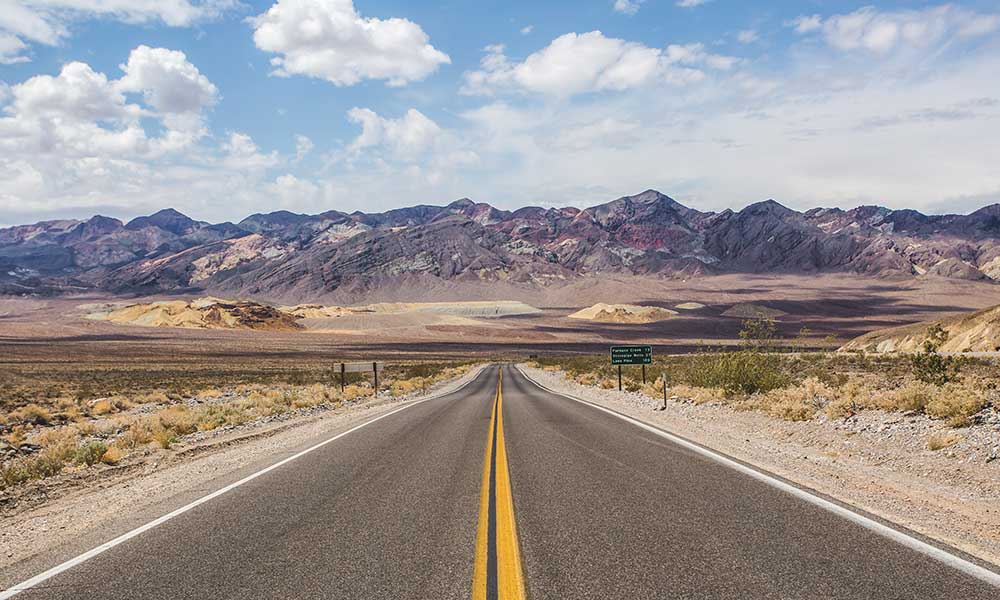There are over 165 miles of hiking trails on Catalina Island, making it the perfect destination for experienced hikers seeking a challenge, as well as beginners looking for variety.
In the following guide, we’ll tell you everything you need to know about hiking on Catalina Island, from the best hiking trails to essential safety tips and more.
Can You Hike On Catalina Island?
Yes! Not only can you hike on Catalina Island but you are encouraged to do so. The island is full of fantastic hiking trails, including the Trans Catalina Trail, which is one of the most famous in the state.
You can’t simply head to the island and start walking, though. There are a few preparations that you must make first.
Do You Need A Permit To Backpack Catalina Island?
You need a hiking permit to hike across the interior of Catalina Island, including the Trans Catalina Trail.
The type of permit that you need depends on the hiking trails you’re walking.
If you’re hitting a short trail for a day hike, a standard hiking permit will suffice. The permit is free and can be acquired online from the Catalina Island Conservancy website. Simply visit this page, create an account, tell them which trail you’ll be walking, and you’re good to go.
For multi-day hikes that involve camping on Catalina Island, you’ll need to make camping reservations and keep them with you at all times. These camping reservations will serve as your hiking permit for the duration of your stay.
Make your reservations here.
You can also acquire maps, hiking permits, and other information from the Conservancy House in Avalon, the Hermit Gulch Campground Office, the Airport in the Sky, Two Harbors Campground Visitors Center, and the Nature Center at Avalon Canyon.
Where Can You Hike On Catalina Island?
There are dozens of miles of hiking trails on Catalina Island—hikers of all skill levels are spoilt for choice.
We have highlighted a few of the best options below:
Easy – Two Harbors to Parsons Landing
- Length of Hiking Trail: 6.5 Miles
- Time To Hike: Between 4 and 6 Hours
This hike takes you along the coast of Catalina Island, offering you some of the best views in Southern California. It begins in Two Harbors and ends at the Parsons Landing campground, so you can choose to finish your hike by camping.
It takes about 4 to 6 hours to cover this hike, but it’s not a difficult walk. As long as you have the stamina to walk for up to 6 hours, you should be okay with this hike.
Moderate – Garden to Sky Hike
- Length of Hiking Trail: 2.5 miles
- Time To Hike: Between 2 and 4 Hours
This Catalina Island hiking trail is shorter than the one above, but it’s not as straightforward, so it’s more suited to intermediate hikers. It’s the perfect hike if you want to see more of Catalina Island but also want time to visit the island’s shops and restaurants.
The hike begins at The Wrigley Memorial and Botanic Garden and provides some breathtaking panoramic views throughout. The fact that it begins with the Botanic Garden means you’ll see some beautiful flowers at the start of your hike.
Entrance costs $7 for adults and $5 for seniors/vets.
Advanced – Trans-Catalina Trail
- Length of Hiking Trail: Approximately 37 Miles
- Time To Hike: Up To 5 Days
At nearly 40 miles, the Trans Catalina Trail is the island’s toughest and most famous trail. It should take you between 3 and 4 days to hike but could last up to 5 days.
Hiking is not allowed on Catalina Island after dark, and you obviously can’t walk for 3 to 5 days straight, so you’ll be stopping at several campgrounds on the way, including Two Harbors Campground, Hermit Gulch Campground, Black Jack Campground, and Parson’s Landing.
The Catalina Island Conservancy plots the Trans Catalina trail into the following segments:
- Avalon to Black Jack
- Black Jack to Little Harbor
- Little Harbors to Two Harbors
- Two Harbors to Parsons Landing
- Parsons Landing to Starlight Beach
If you’re tackling this long and arduous hike, make sure you have all the right gear and have made your campground reservations.
How to Stay Safe Hiking Catalina Island
Whether you’re going on a day hike or hitting the mighty Trans Catalina Trail, remember to prepare properly and stay safe.
The following safety tips will ensure you make it back safely after hitting those tough Catalina Island hiking trails.
Hike in a Group
It’s always safer to hike in a group. It’s also more interesting, as you’ll have friends/family to entertain you throughout the hike.
If anything happens, they can help you, either by providing direct assistance or calling for help. Many serious hiking accidents and fatalities occur among lone hikers. They may fall or get bitten by a wild animal, and if they are incapacitated from toxins/broken limbs or have been knocked unconscious, they can’t signal for help.
Dress for the Weather and the Trail
If you’re hiking in the blistering sunshine, consider wearing loose-fitting shorts and a lightweight top. Look for clothes that have a high UPF rating to protect against harmful rays and don’t forget your sunglasses.
If you’re hiking Catalina Island in cold weather, take a rain coat and consider thicker clothes that provide more protection against wind and rain.
Take Food and Water
In the summer, many of Catalina Island’s streams have dried up and it can get incredibly hot. You can’t survive without water for too look in that kind of heat, so take plenty of bottled water with you or consider a hydration backpack.
Drink liberally throughout your hike to avoid dehydration.
Pack all Essential Hiking Gear
Take everything you’ll need and everything you might need, including a first aid kit, compass, GPS/smartphone, rain jacket, sunscreen, repair tools, and fire starters.
Don’t forget your trekking poles, as you’ll need them to tackle some of the island’s steep inclines.
Avoid Wild Animals
Bison are wild animals, not giant cows just begging for an Instagram selfie. They can accelerate rapidly and reach speeds of up to 35 MPH, and if you find yourself in their path, you could be in serious trouble.
Don’t feed, touch, or antagonize the bison. Don’t even go near them, and if you find yourself mere yards from one of these beautiful creatures, give it an escape route.
You may also encounter rattlesnakes on Catalina Island, and they exist here throughout the year, with the majority seen from April to October. They’re pretty rare on the trails, but you should still keep an eye out. These snakes are venomous and can be deadly, so if anyone in your group is bitten, seek immediate medical attention.
Watch Out for Poison Oak
Poison Oak is commonplace throughout Catalina Island and can often be seen in the island’s creek beds and canyons. Sticking to the trails will help you to avoid this dangerous plant for the most part but you should also watch where you’re going, wear long-sleeved shirts and long pants, and immediately wash any area that comes into contact with the plant.
Don’t Forget Sun Protection
Although Catalina Island is home to rattlesnakes, bison, and poison oak, the sun is one of the island’s biggest dangers.
Wear a wide-brimmed hat to protect your face and neck and take some travel sunscreen with you. Don’t simply apply sunscreen once and then hope that it works throughout the day. Eventually, it’ll dry up and you’ll start to burn.
Follow the instructions on the bottle/stick, which usually recommends liberal applications throughout the day and immediately after washing, bathing, or swimming.
What Else Can You Do On Catalina Island?
Catalina Island is a fantastic vacation destination, one that is filled with adventure, exploration, and fantastic hospitality. If you’re turning your short hike into a long vacation, check out these other activities and attractions.
Adventures on Catalina Island
Head to the Tour Plaza in Avalon to book an exciting land tour, one that showcases the beauty of Catalina Island without testing your fitness.
The Bison Expedition will show you some of the island’s bison on-board a biofuel Hummer; Journey to the Sky takes you up to Airport in the Sky and its amazing views.
There is even a Zip Line Eco Tour that starts at Descanso Beach Club and propels you across five different lines at 35 MPH.
Off the coast, the Glass Bottom Boat Voyage and the Seal Rocks Sunset Cruise are just two of the expeditions centered around the aquatic residents of Catalina Island, including sea lions and dolphins.
Hotels on Catalina Island
Camping is how true adventurers spend the night on Catalina Island. The Hermit Gulch Campground is one of the most convenient as it’s the only one within city limits. It also offers fantastic views of the surrounding area and is home to many species of plants and animals.
Other options include the Little Harbor Campground, Black Jack Campground, Two Harbors Campground, and Parsons Landing Campground.
If you’re looking for something a little more luxurious, check out the charming Banning House Lodge bed and breakfast, the Villa Santa Rose vacation rental, or the Pavilion Hotel, which is just a few steps from Avalon Bay.
Restaurants on Catalina Island
Descanso Beach Club is one of the best places to eat in Avalon while Two Harbors has options like Harbor Sands, Harbor Reef Restaurant, and West End Galley.
You’ll also find plenty of picnic tables at Two Harbors.
Is Catalina Island Open During Covid?
Catalina Island has a dedicated COVID-19 page containing details on restrictions and requirements.
At the time of writing, it’s early 2022 and mask restrictions/lockdowns have died down somewhat. You shouldn’t have an issue visiting Catalina Island if you’re vaccinated and likely won’t be asked to wear a mask.
If you have not been vaccinated, however, you may need to wear a mask to visit certain establishments.
Of course, these rules are subject to change and conditions are improving all of the time. The page linked above will tell you more about visiting Catalina Island during the coronavirus pandemic.







